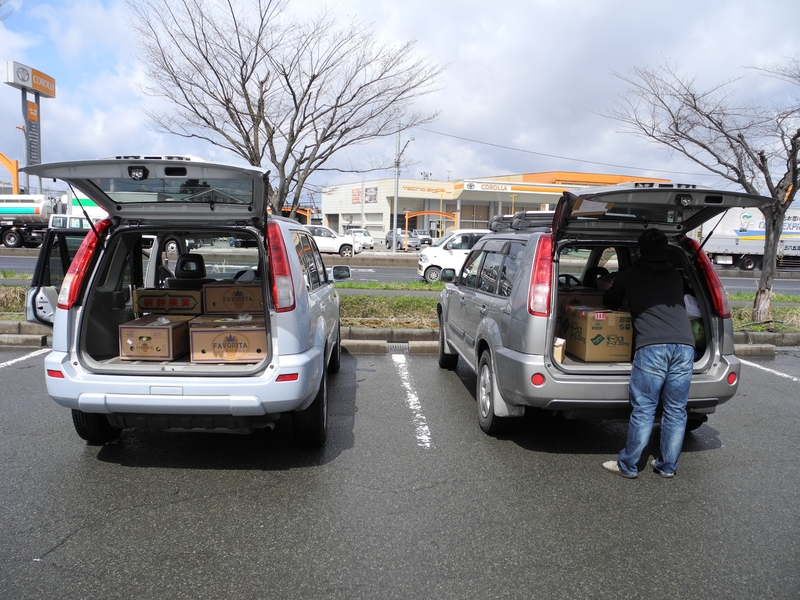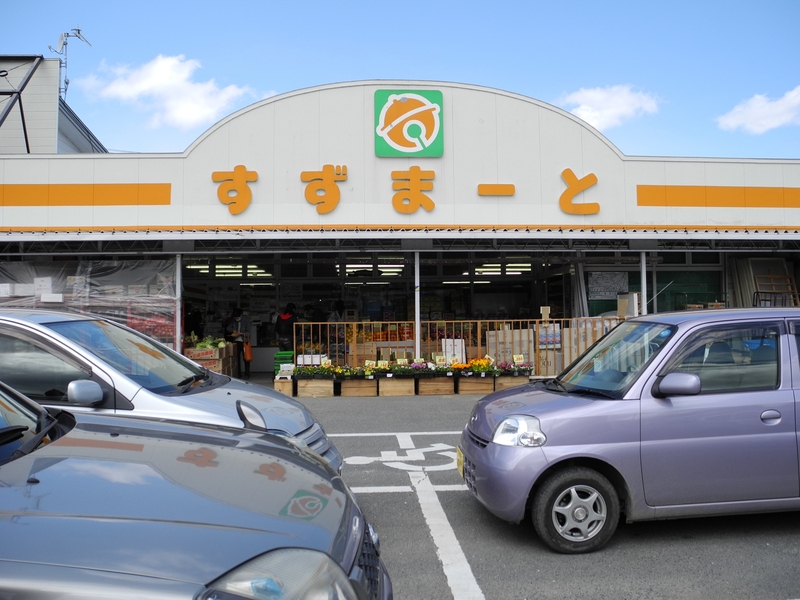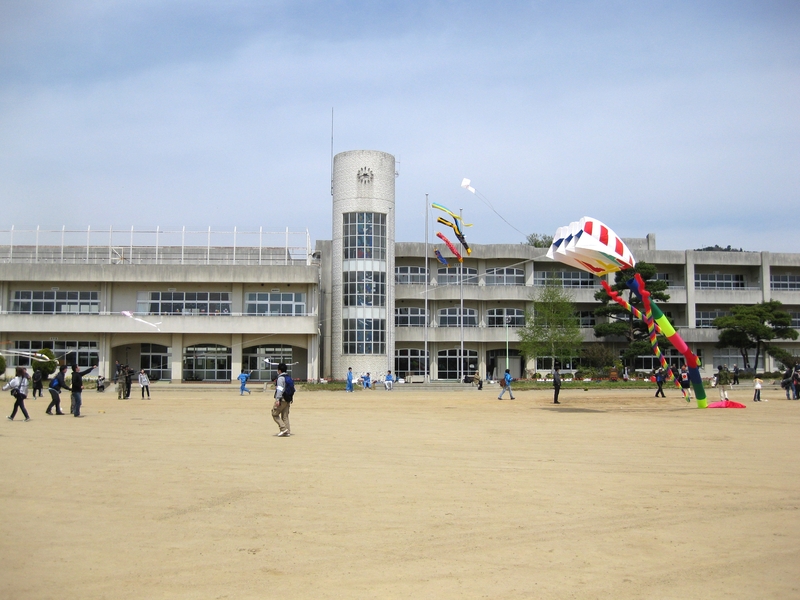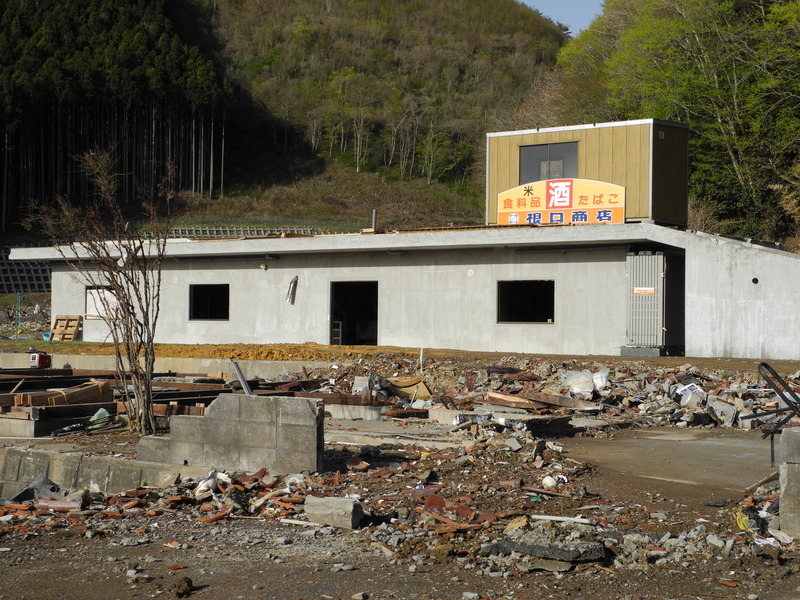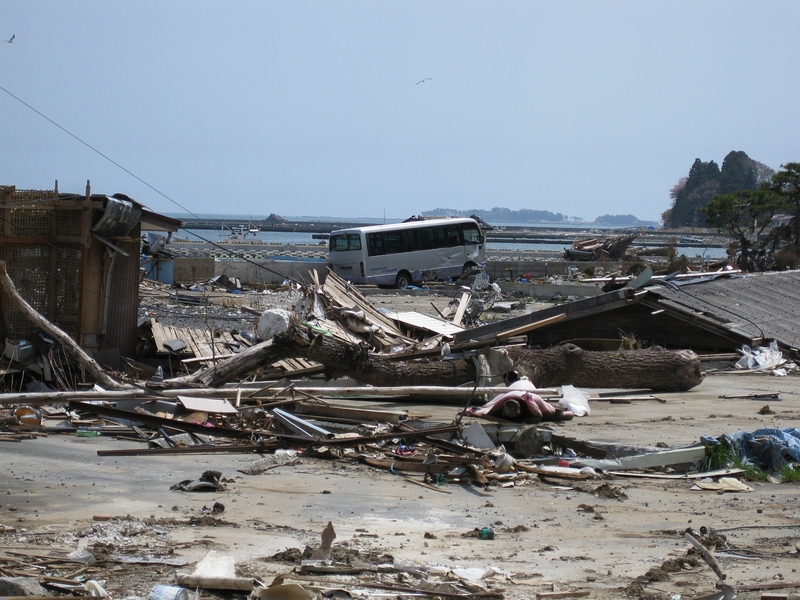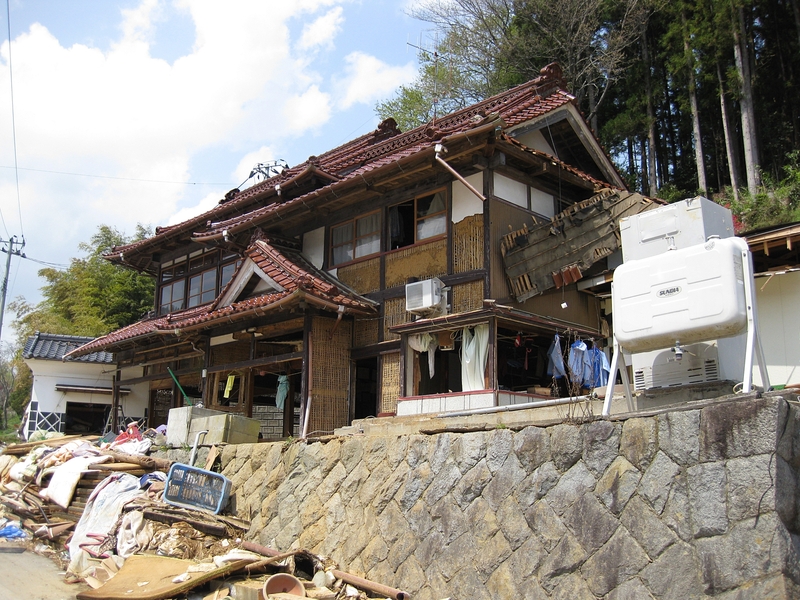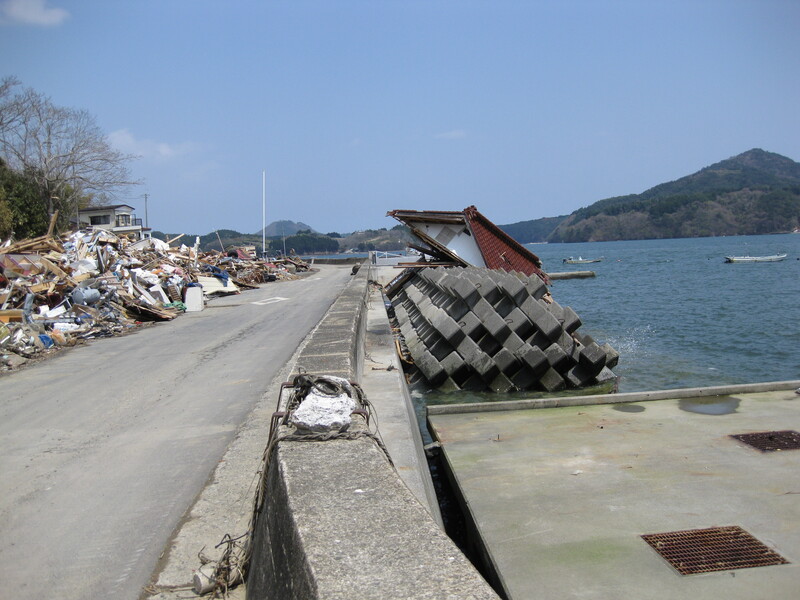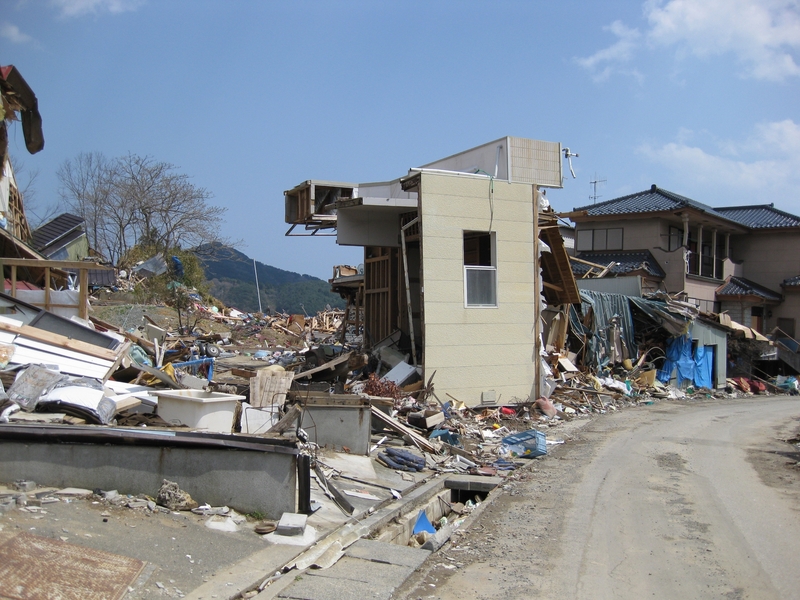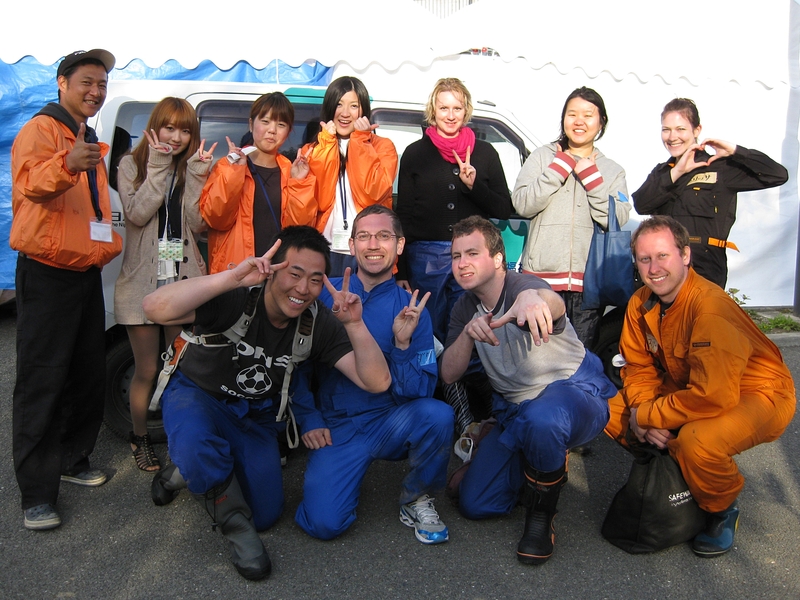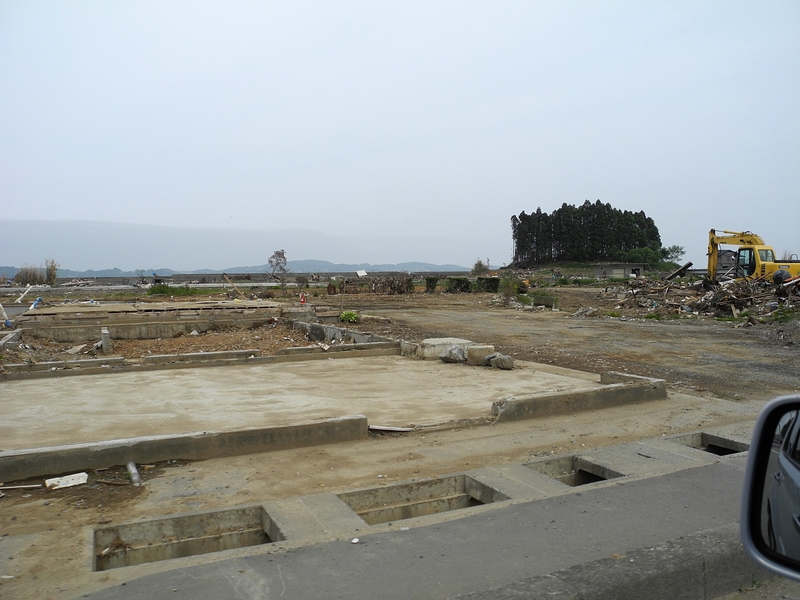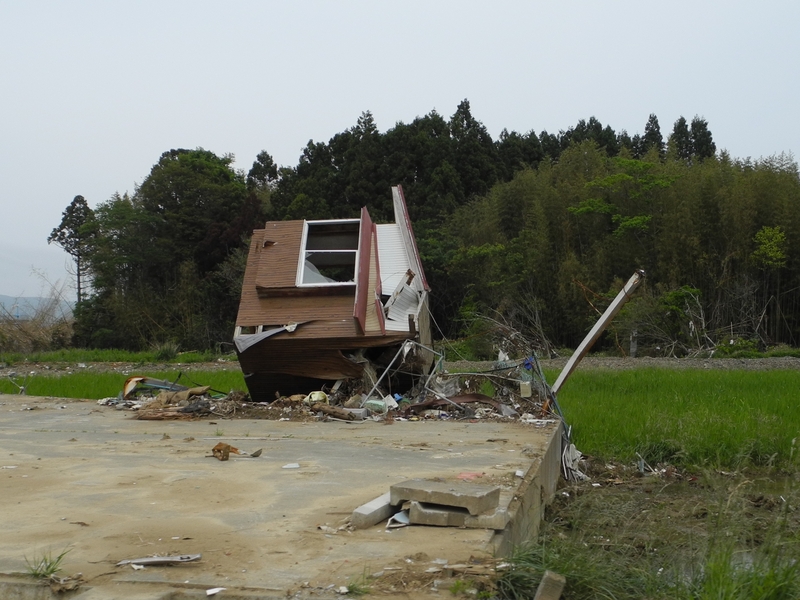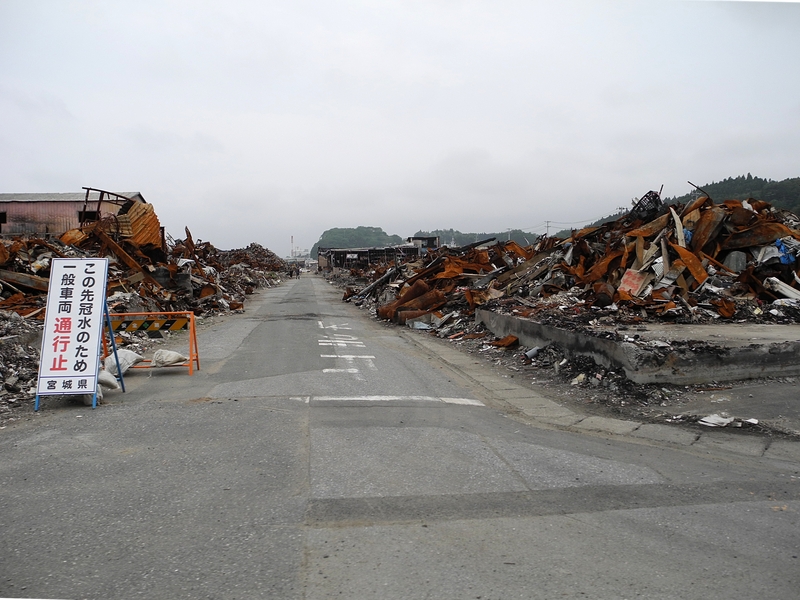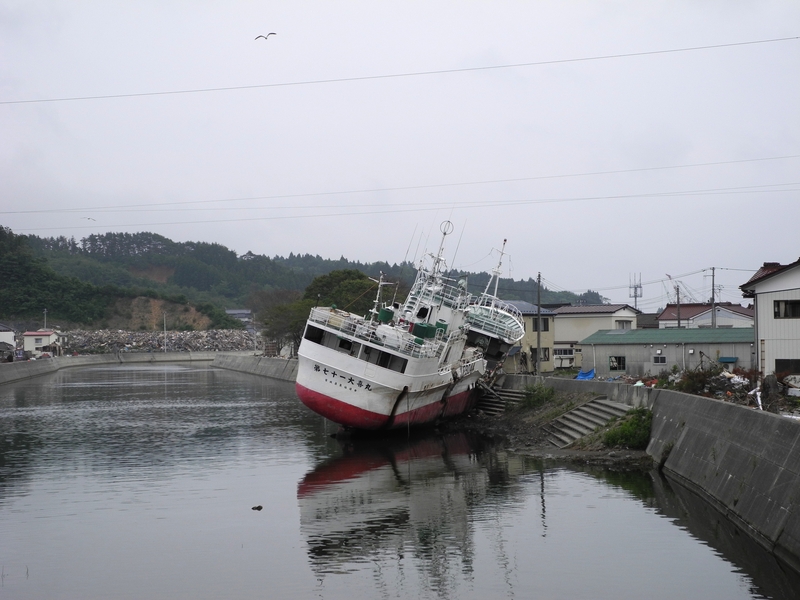Fruit Tree Project
2011-06-08
Following the March 11 earthquake and tsunami, my friend Paul and some other guys started a volunteer group called volunteerAKITA with the goal of helping out tsunami victims. The tsunami hit the east coast of Tohoku (northern Japan). Akita is in the NW, so we were not affected. Directly to the east of Akita are the prefectures of Iwate and Miyagi, both of which were heavily damaged. Fukushima, home of the nuclear power plant disaster, is several hundred kilometers south.
In the past two months, the Volunteer Akita group has done various things (volunteering for orphanages, delivering toys, volunteer cleaning at Miyako). What I got involved in for Golden Week was the Fruit Tree Project (https://volunteerakita.wordpress.com/2011/04/12/tohoku-relief-the-fruit-tree-project-fund-proposal-2/). Paul and Minami made a website, and many of us solicited donations from across Japan and other countries, with the express goal of providing 2 pieces of fruit for each person in 3 shelters in Kesennuma (気仙沼), a town in Miyagi Prefecture. This is because Paul and Minami had spoken with an organizer for the shelter at Kesennuma Elementary School, and the organizer had requested two things: fresh fruit and furikake (spices used as rice seasoning). Two fruit markets, one in Honjo and one near Kesennuma offered to sell us fruit at wholesale rates. Golden Week came around, the donations came in, and we got ready to go. Thank you, everyone who contributed!
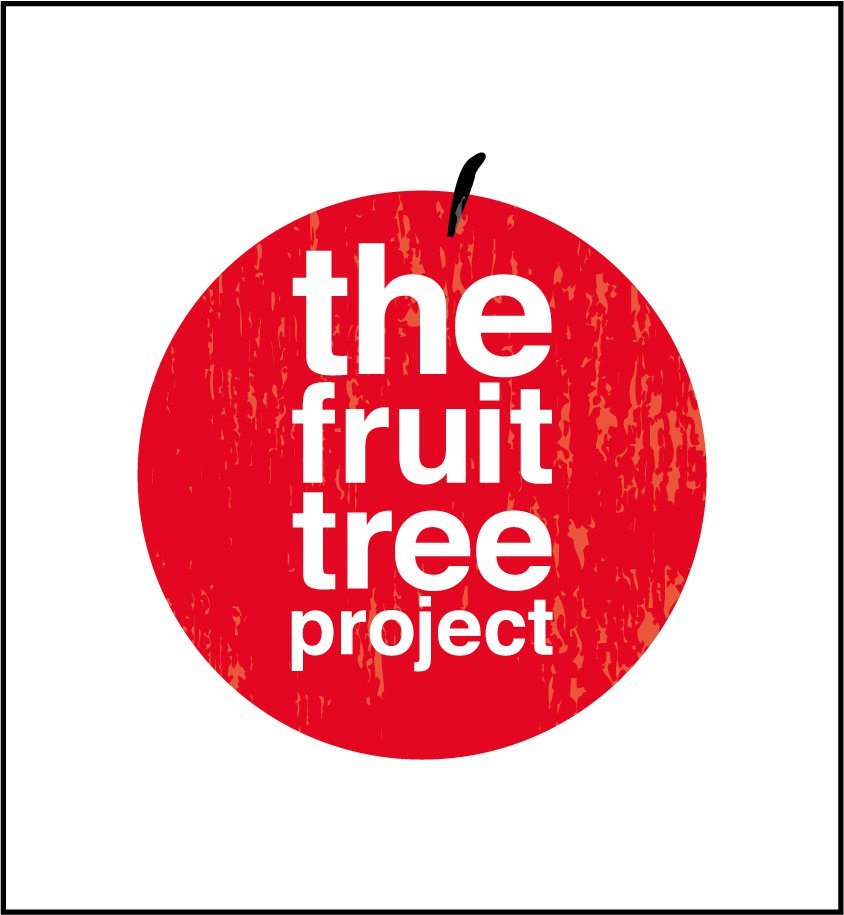
It turns out we had a large amount of cash from donations, but not enough to do two pieces of fruit for 10 days as originally hoped. After talking with the shelter leaders, we decided to do one piece of fruit per person for as long as we could, which ended up being seven days. The shelters (避難所; hinanjo) we wanted to help were Kesennuma Elementary School (気仙沼小学校), Kesennuma Junior High School (気仙沼中学校), and the Kesennuma Community Center (気仙沼市民会館; shimin kaikan). At that time, there were about 139, 478, and 250 people living in them, respectively. And once we arrived, we found out that an additional 50, 300, and 300 nearby residents were dining at those shelters. That meant a delivery of at least 1517 pieces of fruit each day (we ordered by the box, so there was always some extra). The organizers at the shelters were very friendly, and the deliveries were rather smooth. It took about 2 hours each morning to pick up the fruit and drop it off at each shelter. On the last day, we delivered fruit to a 4th shelter — Omose Junior High School (面瀬中学校). The fruit we purchased varied day to day. Bananas and oranges were the most common, because they're fairly cheap and also don't require any food preparation (Japanese people tend to peel apples, not eat them whole, you see). We also delivered some sunfruit (a type of orange), apples, and grapefruit, just to mix things up a bit. Paul and Minami organized the project, and Todd and I helped with the manual labor.
In Kesennuma (and elsewhere in Japan too, presumably), most of the shelters are in schools. There aren't many churches in Japan, and for public buildings, schools are the most common, followed by community centers. School vacation in tsunami-struck places lasted until late April, and up to then, people staying in school shelters slept in classrooms. This was good, because it provided some degree of privacy. In Kesennuma Junior High School, many people still do sleep in classrooms. This is because the school building is somewhat old, and with school enrollment numbers declining over the past many years (like much of rural Japan), there are extra classrooms. The students use half of the school, and the shelter uses the other half. Kesennuma Elementary School, on the other hand, needed its classrooms back, so shelter residents had to move back into the gymnasium. Fortunately, the shelter obtained many large silver tents which they've erected in the gym. This isn't as good as separate rooms, and it'll be too hot in the summer (though it seems like temporary housing will be ready soon, so maybe that won't matter), but it's still some degree of privacy. Even then, not all of the people in the gym have tents — some just sleep on the gym floor, in areas demarcated by 3 foot high cardboard walls. In fact, Omose Junior High School has no tents at all — all of its 250+ residents sleep together on the gym floor.
Next to the shelters I visited, there was extensive construction to build temporary housing. The housing looked to be somewhat similar to mobile homes, and unfortunately the housing is probably poorly insulated, and certainly the houses are very close to each other. Probably because it is convenient to do so, the housing is being built on baseball fields (for example, Kesennuma Junior High School's sports ground and baseball field is being used), but this means sometimes there isn't enough room to spread things out. It also means the baseball club and various other outdoor clubs cannot practice there. Of course, currently the gymnasium is in use, and as long as that continues, the volleyball club and basketball club don't have practice space, and there's no good way to hold gym class. That is inconvenient for the students, though certainly there are other gyms and baseball fields across town which can be used instead. Because the temporary housing looks like it'll be used for a very long time, I wonder why they didn't seize local farmland and build temp housing there, since that would have both let the schools get back to normal and given the temporary housing enough space for properly spread out houses and parking and such. Then again, converting rice fields into land fit for housing probably involves moving a lot of dirt and gravel.
On May 3, there was a small kite festival at Kesennuma Elementary School for shelter residents. Nearby students showed up too, and a big group of ALTs came down from Akita — Ryan, Jeff, Melissa, Selina, and Liyen. All the kids and several adults flew kites for a while. Later, Todd did some magic tricks with cards and coins. It was pretty impressive, and he was videotaped by NHK, but it wasn't aired. Earlier in the week Paul and I were interviewed by NBC, and later NHK interviewed Paul, Minami and me, but those also wasn't aired. The NBC crew explained that there was too much international news at that time (a wedding, a storm, and then OBL). I blindly speculate for NHK it's a little more delicate, because NHK is within Japan, and showing a story about a small volunteer group bringing fruit to shelters might be seen as highlighting how the shelters aren't providing proper nutrition, whether or not that's even the case. Japan's Self-Defense Force provides shelter meals, and I don't know much about their system, though it's clear that they're working quite hard. Certainly complaining would be unproductive — better to do something instead — thus, the Fruit Tree Project.
Paul and I have rather large SUVs, so we slept in our car 5 nights. One night, Jessica invited us to crash on her floor, and we got our weekly shower out of the way. Three nights we parked at a nearby parking area, which was just off the highway and sometimes noisy trucks pulled in, but overall worked out pretty well. Two nights we parked at Isarabi Park (漁火パーク) on the Karakuwa Peninsula (唐桑), which has tent sites for volunteers and a large restaurant. The sunrise view from Isarabi Park was quite nice.
The March 11 earthquake did some damage to Kesennuma, but compared to the tsunami it was trivial. The tsunami affected coastal areas, obviously, but it also traveled up rivers, so even areas several kilometers from the coast were devastated, if they were near a river and at low elevation. Fortunately, Kesennuma is fairly hilly, compared to, for example, nearby Rikuzen Takata (https://secure.wikimedia.org/wikipedia/en/wiki/Rikuzentakata,_Iwate), so many houses were not hit by the tsunami. Elevation matters a lot in determining what places were damaged. The lowest-lying flat areas were totally destroyed — there is nothing left to clean up, except mud, because mostly everything was washed away. Above that, there are houses that are partly destroyed or in pieces. Some houses that were particularly well built are still in place, but if water reached the second floor, the house is probably not salvageable. Even if water only hit the 1st floor, many houses will be scrapped, depending (I was told) on the building materials used. In the hardest hit areas, nobody will rebuild anything, and in other areas it varies — one house we saw looked repairable, but the residents said that area wasn't considered safe for houses any longer, and regardless, they'd be too scared to move back in there. They had plans to build a new house several kilometers inland, demolish their old house, and use the old location as farmland. The neighboring factory will be rebuilding at its original location, though. For other families, it is unclear what the future will bring. Rural Japan has an aging population, and elderly families whose houses were destroyed will likely find it difficult to rebuild their houses. I suppose many people will be in temporary housing for a long time, some people will build new places, some will leave the area, some will move into apartments (if they can find them, which right now they can't, because all the apartments are full), and some will move into retirement centers. Additionally, many businesses were destroyed, and people who lost both their houses and their jobs will have extra difficulty getting resettled. Even after seeing the devastation in person, it is hard to comprehend the magnitude of everything. One afternoon I took an hour drive south along the coast, and the wreckage continued, village after village, much like it was in Kesennuma. Just how many towns along the coast were damaged like this? I can't imagine it, or maybe just don't want to.
The Kesennuma Disaster Volunteer Center is quite well organized. They have a good supply of tools like shovels, wheelbarrows, hoes, rakes, brushes, crowbars, and whatnot. They also have backup gear for people who forget things like rain gear, gloves, masks, or work boots with metal insoles. Volunteers arrive around 9:00, and work groups are formed based on what kind of requests have been made. For example, a house owner might ask for a group of 15 workers to clean up dirt and garbage in their yard. Once formed, the group collects the supplies it needs and buses to the site. Volunteers bring their own water and lunch, and work officially finishes at 3:00. The house owners we met were very energetic, because they were mostly elderly folk who wanted to repair their house but needed help with heavy lifting and tasks that would take a long time (and because people who weren't energetic wouldn't have bothered asking for volunteer cleanup help). Even at the one house we went to with younger people, it was clear that Grandmother was in charge. She told us what to do, and later gave us instant ramen for lunch and ice cream for afternoon snack. Her two sons were her deputies — they gave us the fine details on what to clean and what to leave be. In the late afternoon after we finished, we played with one of the grandchildren for a while until the bus came. He taught us a game where two people each pick a blade of grass, cross them over each other, and pull. The winner is the person whose grass blade doesn't break, and then the entire thing is repeated. The weather was good during Golden Week, so working and playing outside worked out fairly well. I have no idea how long this type of support will be needed, but possibly for quite some time.
News
The Asahi Shinbun published this article about the Fruit Tree Project and VolunteerAKITA on June 7th, 2011.

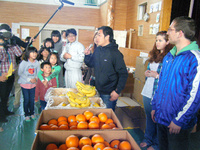
被災地に果物贈る 秋田県内のALTが活動
秋田県内の学校で英語を教える外国語指導助手(ALT)が、被災者にバナナやミカンなどの果物を届ける活動を続けている。ボランティアで被災地を訪れ、食生活の偏りを知ったのがきっかけだった。これまでに宮城県気仙沼市や岩手県陸前高田市で配った果物は1万5千個以上になる。
活動名は「フルーツ・ツリー・プロジェクト」。由利本荘市の小中学校で英語を教えるポール・ユーさん(26)=米国出身=が4月初旬に始めた。
「食べ物は不自由しないけど、果物が食べたい」。ボランティアで訪れた気仙沼市の避難所で、被災者からこう聞いたのがきっかけだ。ご飯とみそ汁が炊き出しで提供されていたが、野菜や果物は不足がちだった。ユーさんは「胃袋は満たされても、栄養が偏れば健康じゃない」と考えた。
東日本大震災が発生した後に立ち上げた「ボランティア秋田」のホームページ(http://volunteerakita.org)でプロジェクトを紹介し、果物代の募金を始めた。
安く買うためのルート開拓もした。宮城県内や由利本荘市内の卸売業者に相談し、特別に安い価格で果物を譲ってもらえることになった。
バナナなどを大量に載せた車で、ユーさんら県内のALT約10人は大型連休中の4月29日、気仙沼市の避難所を訪れた。被災者に果物を1個ずつ手渡すと、笑顔が広がった。避難所では調理することが難しいため、「バナナは皮をむくだけで食べられるので喜ばれた」と振り返る。
県内外のALT仲間の口コミで賛同者は100人を超え、募金活動で5月末までの2カ月で約80万円が集まった。一緒に行動するALTのマーガレット・コッカーさん(24)=同=は「果物は被災者との連帯を示す象徴になる」と話す。
被災地では、住宅にたまった泥の片付けも手伝う。震災から3カ月近くたっても全面復興にはまだ遠い。ユーさんは週末を中心に当面、活動を続ける予定だ。「被災した人が復興の手がかりをつかむまでは、果物を届けなくてはいけない」(大隈悠)
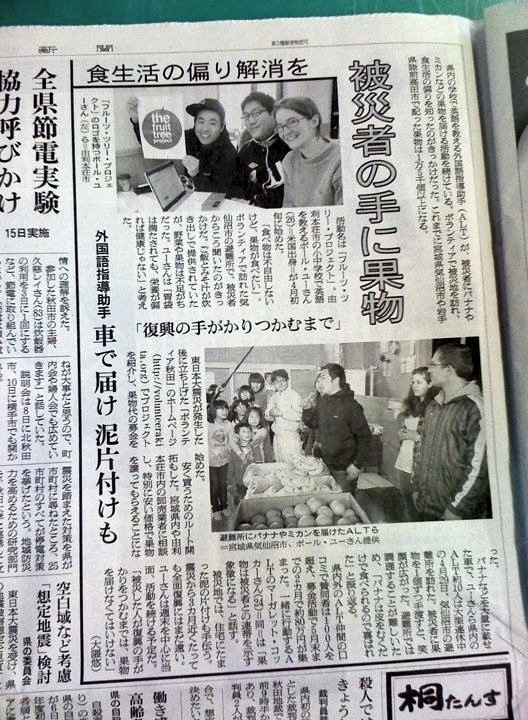
The project was also featured in the Japan Times (English edition).
Group on a mission to deliver fresh fruit to disaster-zone shelters
Staff report
Survivors of the March 11 tsunami living in shelters need fresh fruit — this is what Minami Ishikawa and Paul Yoo from Akita Prefecture learned when they went to volunteer their time in Kesennuma, Miyagi Prefecture, in early April.
Ishikawa and Yoo talked to people at evacuation centers who told them the meals served there often consisted of a bowl of rice and miso soup but no fresh fruit or vegetables. They said they were craving such food, Yoo said.
Yoo, an assistant language teacher from the United States who teaches English at a school in Yuri Honjo, and Ishikawa, an office worker, started gathering volunteer workers right after the quake to help the evacuees in Miyagi and Iwate prefectures.
As part of their activities, they launched the Fruit Tree Project. They collected donations to buy fresh fruit and gathered volunteers — both Japanese and non-Japanese — to deliver it to evacuation centers in the tsunami-hit areas.
They started the fruit deliveries in Kesennuma during Golden Week in early May and later went to several shelters in other areas mainly over the weekends.
The project has involved more than 100 volunteers, and with support from Second Harvest Japan, a charity-based food bank in Tokyo, the group has collected more than ¥1 million in donations from all over the world. So far, they have delivered over 23,000 pieces of fruit.
"Everyone is so happy when we bring fruit to them. We want to continue bringing fruit to the shelters, especially to the small ones where people don't get any fresh fruit at all," said Yoo.
For more information about the project and to make a donation, email volunteerakita@gmail.com or visit its website at volunteerakita.wordpress.com.

The above newspaper articles are from the Asahi Shinbun and Japan Times, respectively. The pictures used in them, and the picture of the article itself, were taken by volunteerAKITA group members.
Delivering Fruit
Sunday was a long day, and we used the hours to deliver ridiculously many bananas to twenty-some shelters in Kesennuma. To begin with, Yui and I left at six in the morning. We met up with Jon and Jez, and headed to Yokote. Kathie was waiting for us there, and we picked her up and hopped on the expressway heading east.
There is a supermarket in Kitakami called Super Osen. They have cheap bananas. Very cheap. It seems they have cheap everything, because we got there before opening hours, and maybe 50 people were lined up outside the front door. Anyway, the doors opened, and we got our bananas. 35 boxes. Everyone was skeptical as to whether we'd be able to fit all the bananas in our cars, but we did. Then we hopped on the expressway again, and headed SE to Kesennuma.
When we got there, we met and planned out the adventure. Kathie went to help Paul with his deliveries, and Jess and Rachel, two amazing Kesennuma ALTs, helped us with ours. In the morning, we hit up Kujo Elementary School, Kesennuma High School, K-Wave, Matsuiwa Elementary School, Matsuiwa Junior High School, and the Bosai Center. K-Wave still has hundreds of residents, but several of the other shelters have decreased in numbers as people move into temporary housing or find other places to live. In the shelters with more space, people can set up tents or cardboard walls, or use several rooms, all of which help give them a modicum of privacy — far better than everyone living together on the gym floor. The food situation also seems to be improving. At several shelters, people told me they were getting canned fruit once or twice a week — and on rare occasions, fresh fruit. A month ago, in contrast, nobody said they were getting any fruit at all. Even at the shelters where people were getting fruit from time to time, they were very happy to get a few boxes of bananas. And as we were delivering, we ran into many of Jess's and Rachel's students, which was a lot of fun.
| Shelter | 避難所 | Bananas |
|---|---|---|
| Kujo Elementary School | 九条小学校 | 74 |
| Kesennuma High School | 気仙沼高等学校 | 222 |
| Sogo Taiikukan (K-Wave) | ケー・ウェーブ | 740 |
| Matsuiwa Elementary School | 松岩小学校 | 74 |
| Matsuiwa Community Center | 松岩公民館 | 296 |
| Bosai Center | 防災センター | 444 |
| Hashikami Elementary School | 階上小学校 | 148 |
| Hashikami Junior High School | 階上中学校 | 518 |
| Hashikami Community Center | 階上公民館 | 158 |
| Niitsuki Junior High School | 新月中学校 | 252 |
| Shishiori Junior High School | 鹿折中学校 | 252 |
After lunch at 7-11, we headed to Hashikami Elementary School, Hashikami Junior High School, Hashikami Community Center, Niitsuki Junior High School, and Shishiori Junior High School. At this point, we were almost out of bananas, and it was almost dinner time in any case. Dinner time makes deliveries to shelters somewhat chaotic, and is best avoided. Yui and I started back, and the rest of the group headed off to a final stop at Omose Junior High School. 3 hours later, we were home, safe and very tired. I soon fell asleep and almost slept through my alarm clock the next morning.
This is the first time I've visited so many shelters in a day, and it's quite interesting to see the differences. The Bosai Center is a fire station, and part of it is now a shelter. But the other part is a functional fire station, and there are lots of fire trucks parked outside. Some of them have sharks pained on the back. K-Wave is a huge community center. We didn't get a chance to go inside, but we walked around the outside, and there was a skate park with skateboarders working on jumps and tricks. Hashikami Community Center is a 2-story building, and the shelter is on the 2nd floor. There are perhaps four large rooms, and because it's on the second floor, all of the rooms have decent views. Shishiori Junior High School, our last stop of the day, was a fittingly stereotypical Japanese school. It's located at the top of a big hill connected to everything by a curvy narrow road which must surely be impossible to bicycle with any degree of safety. It being a Sunday, we were lucky enough not to encounter any cyclists with whom to test this theory. It should be noted that evacuation sites in Japan are typically used not only for immediate evacuation, but also for longer term use. As such, they need to have a safe location (a high location), a large space for people to sleep in (a gym, say), and a decent road for supply trucks. I am told this is one reason that schools are on the top of hills — they already fit two of the three criteria, and being atop a hill gives them an edge on safety. On the other hand, it may well be that when new schools are being built, people already have houses in the good low-lying areas, so the next best proximal locations are hill tops. It doesn't really matter what the reasons are, because whatever they are, we're very happy that many schools along the coast were on high ground. It's also good fitness training for the kids who have to walk up and down every day.

Fruit Tree Presentation
In the fall of 2011, some other teachers asked me to talk about volunteer work at the annual school festival at Chokai Junior High School. A school festival is usually full of interesting performances, a chorus contest, and perhaps some cross dressing, so I was apprehensive about whether the atmosphere was suitable. They said it was, and they were right. The talk was long ... perhaps half an hour ... and the slide show was projected on a giant screen set up on the stage. The slides themselves are mostly photographs, and my commentary can be found in the notes.

